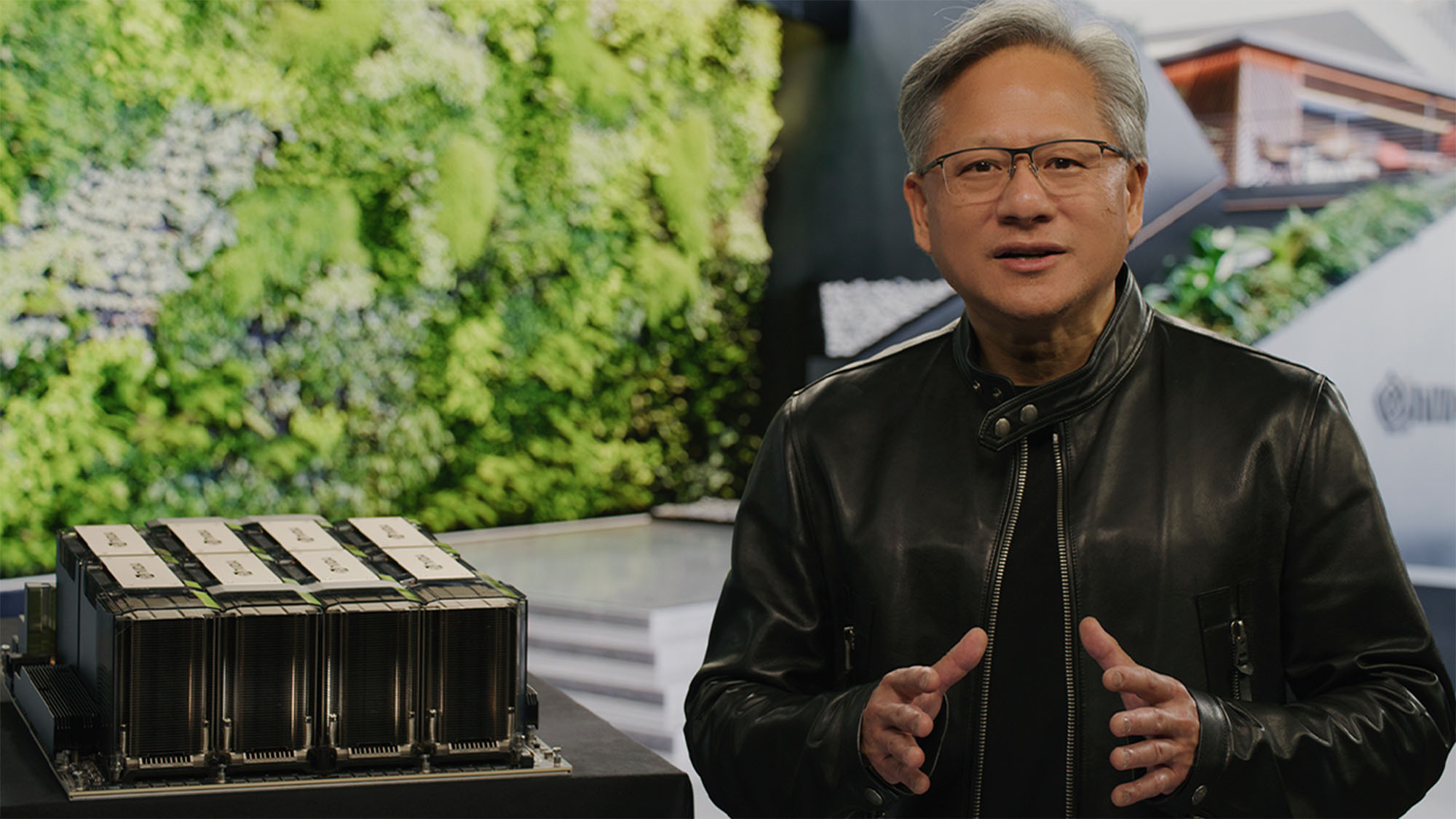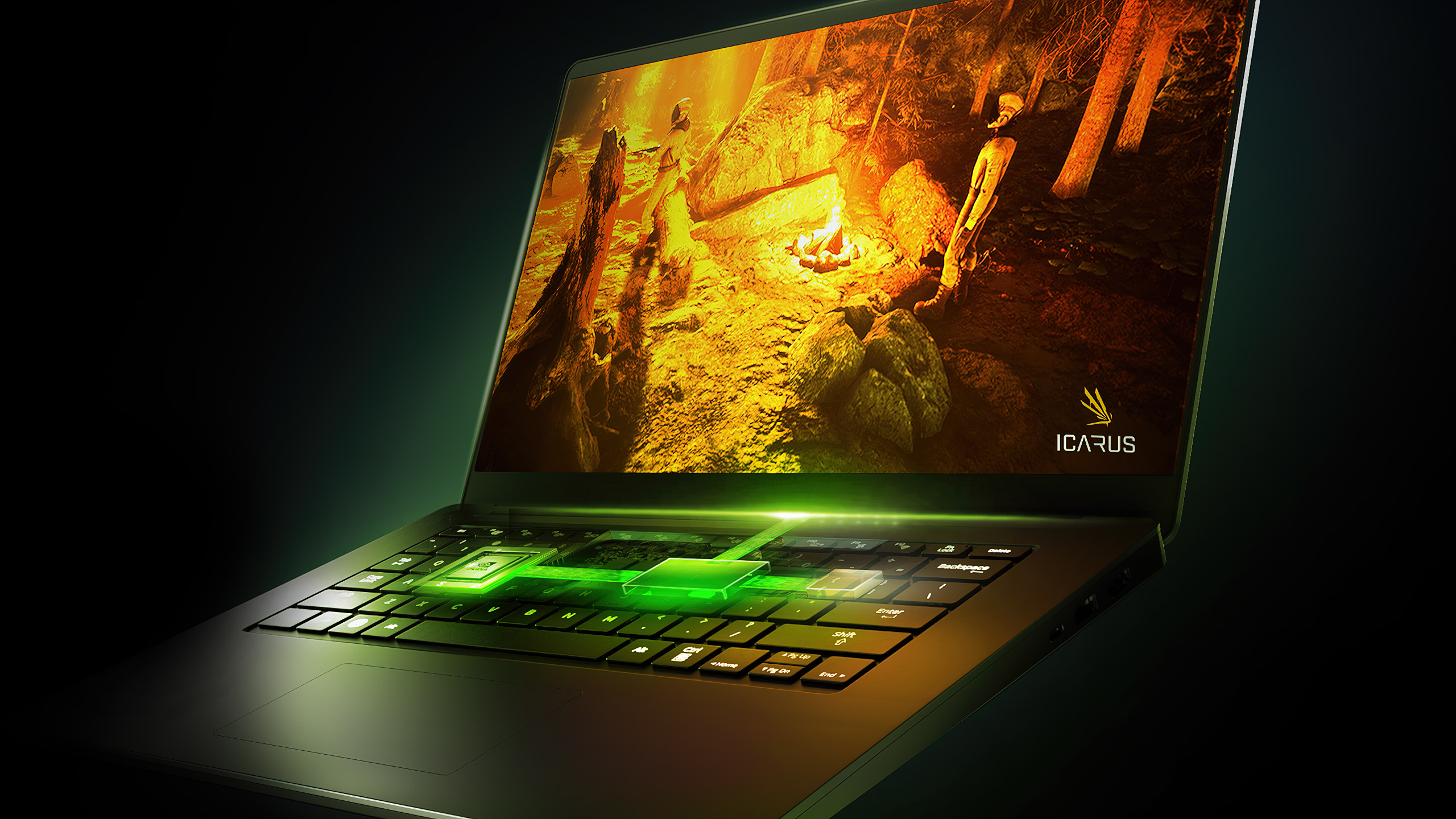
Did you buy an RTX 4090? If you clicked on this article, you’re statistically more likely than most to own the best graphics card in the world right now - but that chance is still pretty darn low.
It’s been a tough year for big tech so far, with Intel reporting record losses and laptop sales down across the board. Things look bad; in fact, a recent report found that more than three-quarters of tech industry employees in the UK are unhappy with their jobs.
Nvidia is no exception, it seems: people just aren’t buying GPUs like they used to, a report from The Register notes. CEO Jensen Huang has taken a hefty $2.5 million pay cut as a result of the company falling short of its targets (though his compensation package still adds up to more than $21 million, so don’t worry about him too much).
The graphics card giant has just released its staggeringly comprehensive 2023 annual review, in which it noted that sales had been impacted by ‘economic headwinds, geopolitical tension, and a product supply chain that swung from severe shortage to excess’.
It’s no surprise that people are spending less on tech - especially high-end GPUs - in the current economic climate, but I think there’s more to unpack here. We’re well into the life cycle of Nvidia’s next-gen RTX 4000 cards, and their performance is impressive; we should be seeing Nvidia thriving, not struggling. So what’s the issue?

An unnecessary escalation
Now, I’m not saying I expected to see the same level of GPU fervor we witnessed with the RTX 3000 series. That was, after all, a GPU generation that arrived during the height of the cryptocurrency craze; a dark time when it was borderline impossible to buy a graphics card for a reasonable price thanks to crypto miners and scalpers sucking up all the available stock.
But even in the immediate wake of the crypto crash, GPU sales remained strong for a while - gamers were excited to snap up a powerful graphics card that wouldn’t cost them an exorbitant amount, and gaming laptop sales were still solid. So what went wrong?
Let’s take a mosey on over to the Steam Hardware Survey to see what pearls of wisdom it might impart. Well, not only am I not seeing a single RTX 4000 GPU at the top of the leaderboard (the flagship RTX 4090 is all the way down at #48), but the most popular picks tell a fascinating story.
In the number one spot is the GTX 1650 - a four-year-old GPU barely capable of running the latest triple-A games at 1080p! Going down the list, it’s much the same story: the first card I’d be willing to play at a higher resolution on is the RTX 3060 Ti, in the #7 spot. The fact is that most PC gamers are still playing at lower resolutions - the need for 4K isn’t what Nvidia seems to think it is.
Yet Nvidia is charging ahead with more and more powerful GPUs, claiming that Moore’s Law is dead and that we can all look forward to spending increasing amounts of cash on new graphics cards. Even the cheapest next-gen card available as I write this, the RTX 4070, still costs $599 - a price out of reach for most gamers.

Is Nvidia its own worst enemy?
In short, I think Nvidia is aggressively forging ahead with more powerful hardware at a time when most gamers would rather see cheaper hardware. That’s why GPU sales are falling, combined with the factors beyond Nvidia’s control noted in the annual review document.
It's also worth pointing out, though it might be blindingly obvious to some, that anyone with both the funds and the intention to buy a high-end GPU will already have one. The RTX 4090 was very hard to find (especially at retail price) back when it first launched; later cards in the same generation didn't see the same rush of sales.
I don’t think the upcoming RTX 4060 Ti will do enough to dissuade me of this notion, either - but that doesn’t mean Nvidia should be worried. In fact, this whole situation isn't even a problem Nvidia needs to solve. Despite its recent losses, Team Green is uniquely positioned to make a whole lot of money selling the most powerful GPUs it can possibly produce over the next few years. Why is that? AI, baby!
Nvidia has already said that it’s going all-in on AI technology, and it’s increasingly easy to understand why. Training machine learning models like the phenomenally popular ChatGPT requires an absolutely ludicrous amount of processing power, and Nvidia might’ve stumbled into the perfect solution: tensor cores.

I’m feeling a little tensor
What’s a tensor core? Well, it’s a specialized GPU core that Nvidia created to help power its DLSS upscaling technology - that’s Deep Learning Super Sampling. The clue’s in the name: tensor cores power AI-assisted resolution upscaling for your games, and Nvidia has been making them for three generations of consumer graphics cards now.
This hardware wasn’t built with training chatbots in mind, but it’s AI-oriented tech - and with the current explosion in AI popularity, Nvidia is taking things very seriously. There’s already a lot of money in AI development, and that’s only going to expand; unlike cash-strapped PC gamers, corporations like OpenAI have comparatively fat wallets that Nvidia is no doubt hoping to dip into.
Of course, that’s bad news for gamers, at least in the short term. It’s possible that Nvidia might decide to get out of the consumer graphics market entirely, focusing on making crazy-powerful enterprise GPUs for training the AI models of the future.
But if that shocking twist does come to pass, it could actually be good news in the long run. For starters, Nvidia has been the big dog of the GPU space for years now - letting someone else take a shot at the PC gaming market could lead to some interesting developments. A few years back I’d be concerned about a lack of competition for AMD’s Radeon graphics line, but Intel has thrown its hat into the ring with Intel Arc GPUs and even Apple is making serious strides with its M-series silicon.
But more importantly, whatever technology Nvidia develops and perfects will bleed through to the consumer space: even if it’s not coming from gamers, the potential profits from selling hardware to AI firms will mean more investment from Nvidia in the GPU industry as a whole, and that’s a very good thing.
Give Nvidia all the money, I say. Team Green has given us the most powerful consumer GPU in the world on more than one occasion, and while those graphics cards aren’t going to get more affordable, the ones that come after will be. New consumer GPUs for gamers is good; improving GPU technology as a whole is great. AI has the potential to revolutionize the gaming graphics industry - we might just need to be a bit patient first.







